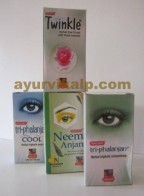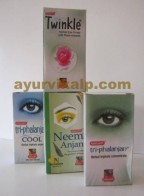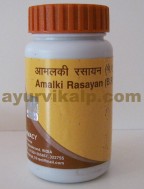Cataracts, a common eye condition characterized by clouding of the eye's lens, can lead to impaired vision. While conventional medicine typically addresses cataracts with surgery, there is growing interest in Ayurvedic approaches for prevention and management. In the United States, where integrative medicine is gaining popularity, Ayurvedic practices offer a natural alternative or complement to conventional treatments.
Ayurvedic Perspective on Cataract Prevention
In Ayurveda, cataracts are associated with the imbalance of the doshas, particularly Pitta dosha, which governs heat and transformation in the body, including the eyes. The deterioration of eye tissues due to aging, oxidative stress, and inflammation are seen as contributing factors. Ayurvedic treatments focus on balancing these doshas, nourishing the eye tissues, and reducing oxidative damage.
Key Ayurvedic Medicines and Remedies
-
Triphala:
-
Composition: A powerful combination of three fruits—Amalaki (Indian Gooseberry), Haritaki (Chebulic Myrobalan), and Bibhitaki (Belleric Myrobalan).
-
Benefits: Known for its antioxidant properties, Triphala is used to cleanse the eyes and promote healthy vision. It can be taken orally as a supplement or used as an eye wash.
-
Usage: Mixing Triphala powder in water and letting it steep overnight creates an eye wash that can be used to refresh and cleanse the eyes in the morning.
-
Amalaki (Indian Gooseberry):
-
Composition: Rich in Vitamin C and other antioxidants.
-
Benefits: It helps in reducing oxidative stress and preventing the progression of cataracts. Amalaki is also beneficial for overall eye health.
-
Usage: Consumed as a juice, powder, or part of herbal formulations.
-
Mahatriphala Ghrita:
-
Composition: A medicated ghee (clarified butter) infused with the Triphala formula and other herbs.
-
Benefits: Used to strengthen the eyes and prevent cataract formation. The ghee base enhances the absorption of the herbal ingredients.
-
Usage: Typically taken orally, a small amount daily, or as directed by an Ayurvedic practitioner.
-
Chandrodaya Varti:
-
Composition: A traditional Ayurvedic eye ointment made from herbs and minerals.
-
Benefits: Applied topically to the eyes, it helps in soothing eye irritation, reducing inflammation, and potentially delaying cataract formation.
-
Usage: Applied to the inner eyelids, usually at night, under the guidance of an Ayurvedic doctor.
-
Saptamrita Lauh:
-
Composition: A blend of herbs like Triphala with iron (Lauh bhasma).
-
Benefits: Enhances vision and strengthens the eye tissues. It also helps in managing conditions like myopia and cataracts.
-
Usage: Typically taken as a supplement.
Lifestyle and Dietary Recommendations
Ayurveda also emphasizes the importance of lifestyle and dietary habits in preventing cataracts:
-
Diet: Incorporate foods rich in antioxidants like leafy greens, carrots, and berries to nourish the eyes. Avoid excessive heat-inducing foods, such as spicy and fried items, to balance Pitta dosha.
-
Eye Exercises: Regular eye exercises, such as palming, blinking, and rotating the eyes, can strengthen the eye muscles and improve circulation.
-
Sun Protection: Protecting the eyes from excessive sunlight by wearing sunglasses is recommended to prevent Pitta aggravation.
Integrating Ayurveda with Modern Practices
In the U.S., many individuals seek complementary approaches like Ayurveda alongside conventional treatments. It's crucial to consult with both an Ayurvedic practitioner and a medical doctor to ensure a holistic and safe approach to eye health.
Conclusion
Ayurvedic medicines like Triphala, Amalaki, and Mahatriphala Ghrita offer natural ways to prevent cataracts and support overall eye health. As interest in holistic and integrative medicine grows in the United States, these traditional remedies provide a valuable complement to modern medical practices. Always consult with healthcare professionals before starting any new treatment, especially when combining different medical systems.












